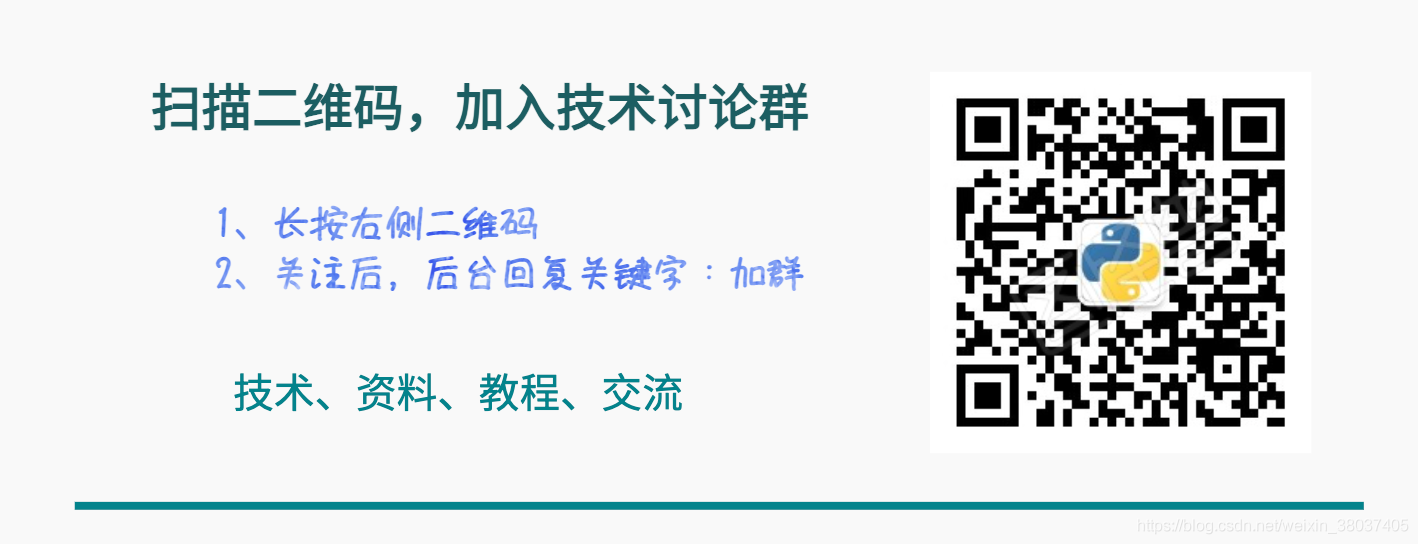Hello, everyone. I've shared many articles about Pandas before. Today I'll share five small and beautiful practical cases of Pandas. My favorite partners, remember to collect, share and praise.
The content is mainly divided into:
-
How to simulate data by yourself
-
Multiple data processing methods
-
Data statistics and visualization
-
User RFM model
-
User repurchase cycle
Recommended articles
-
Finally, the Chinese version of Python data science quick look-up table is coming
-
Addicted, I recently gave the company a large visual screen (with source code)
Build data
The data used in this case is self simulated by Xiaobian, which mainly includes two data: order data and fruit information data, and the two data will be combined
import pandas as pd import numpy as np import random from datetime import * import time import plotly.express as px import plotly.graph_objects as go import plotly as py # Draw subgraph from plotly.subplots import make_subplots
1. Time field
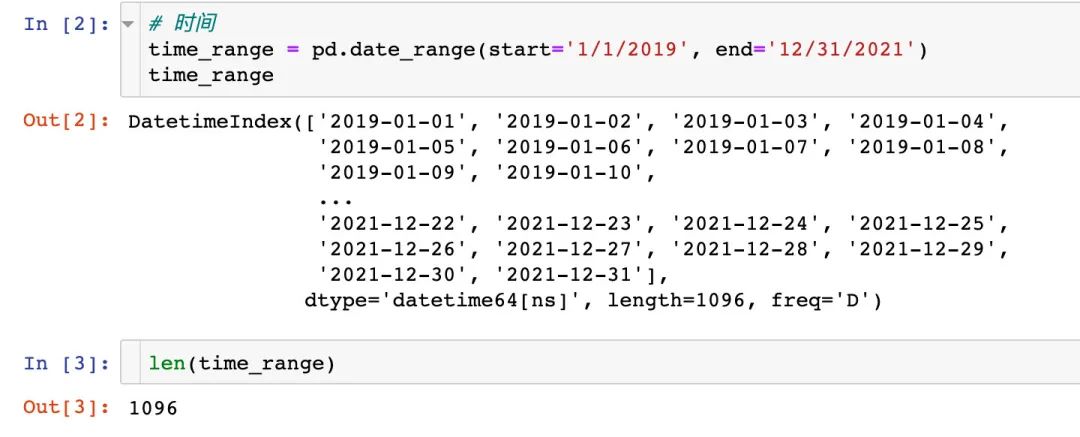
2. Fruits and users

3. Generate order data
order = pd.DataFrame({
"time":time_range, # Order time
"fruit":fruit_list, # Fruit name
"name":name_list, # Customer name
# Purchase volume
"kilogram":np.random.choice(list(range(50,100)), size=len(time_range),replace=True)
})
order
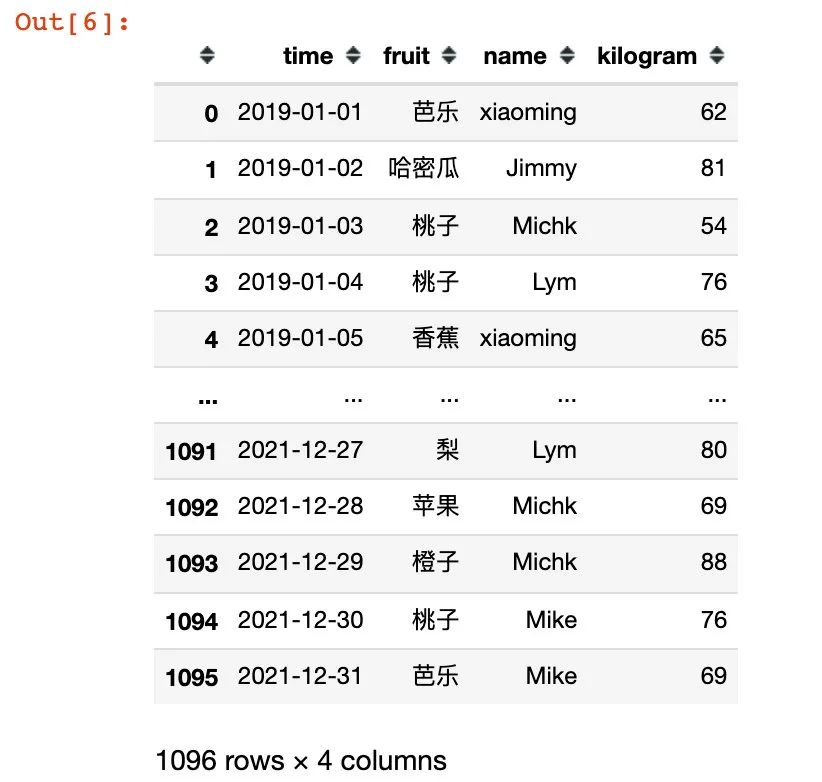
4. Generate information data of fruit
infortmation = pd.DataFrame({
"fruit":fruits,
"price":[3.8, 8.9, 12.8, 6.8, 15.8, 4.9, 5.8, 7],
"region":["south China","North China","northwest","Central China","northwest","south China","North China","Central China"]
})
infortmation
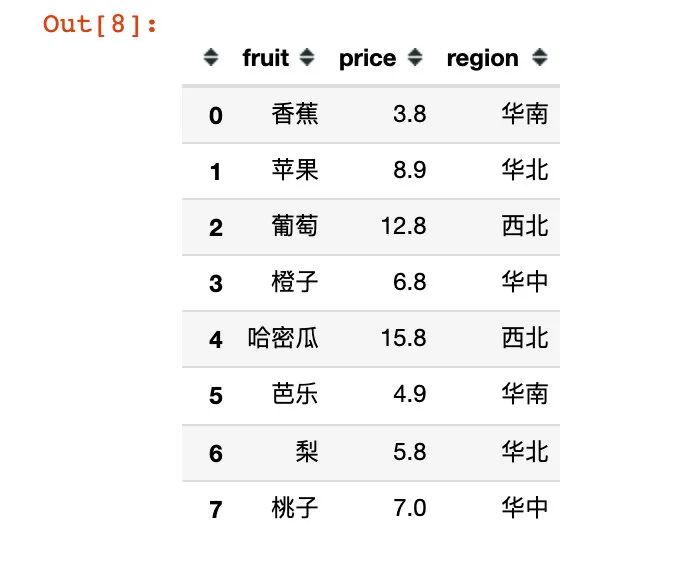
5. Data merging
The order information and fruit information are directly combined into a complete DataFrame, and this df is the data to be processed next
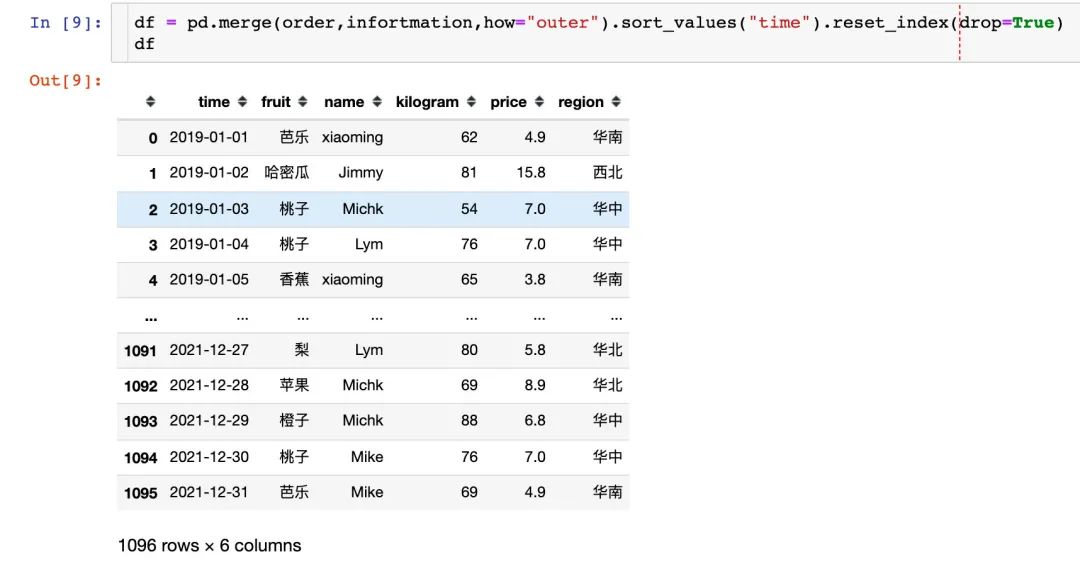
6. Generate new field: order amount
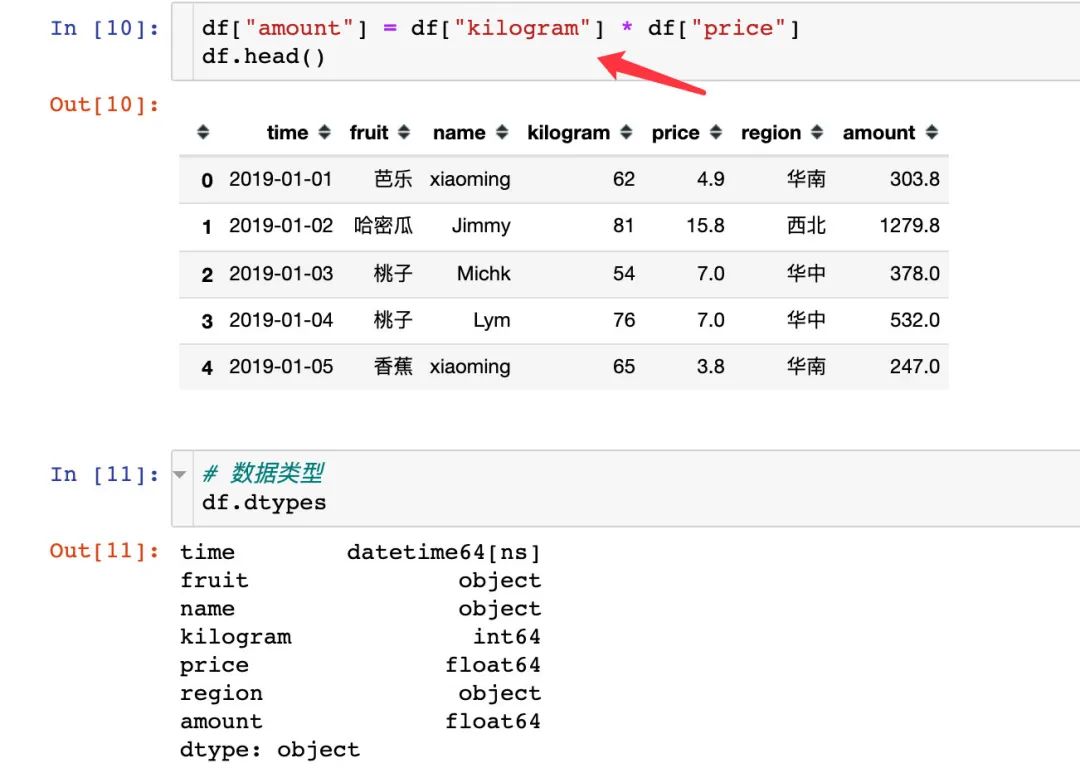
Here you can learn:
-
How to generate time related data
-
How to generate random data from lists (iteratable objects)
-
The DataFrame of Pandas is created by itself, including generating new fields
-
Pandas data consolidation
Analysis dimension 1: time
Monthly sales trend from 2019 to 2021
1. First extract the year and month:
df["year"] = df["time"].dt.year
df["month"] = df["time"].dt.month
# Extract year and month at the same time
df["year_month"] = df["time"].dt.strftime('%Y%m')
df

2. View field type:
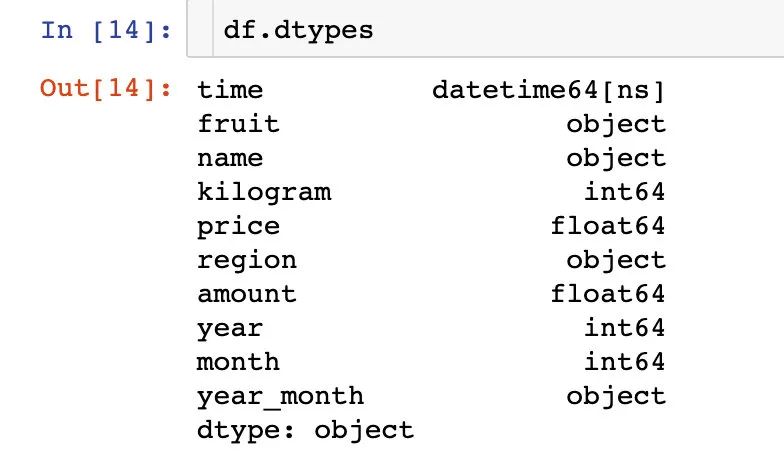
3. Statistics and display by month and year:
# Statistics of sales volume by month and year df1 = df.groupby(["year_month"])["kilogram"].sum().reset_index() fig = px.bar(df1,x="year_month",y="kilogram",color="kilogram") fig.update_layout(xaxis_tickangle=45) # Tilt angle fig.show()
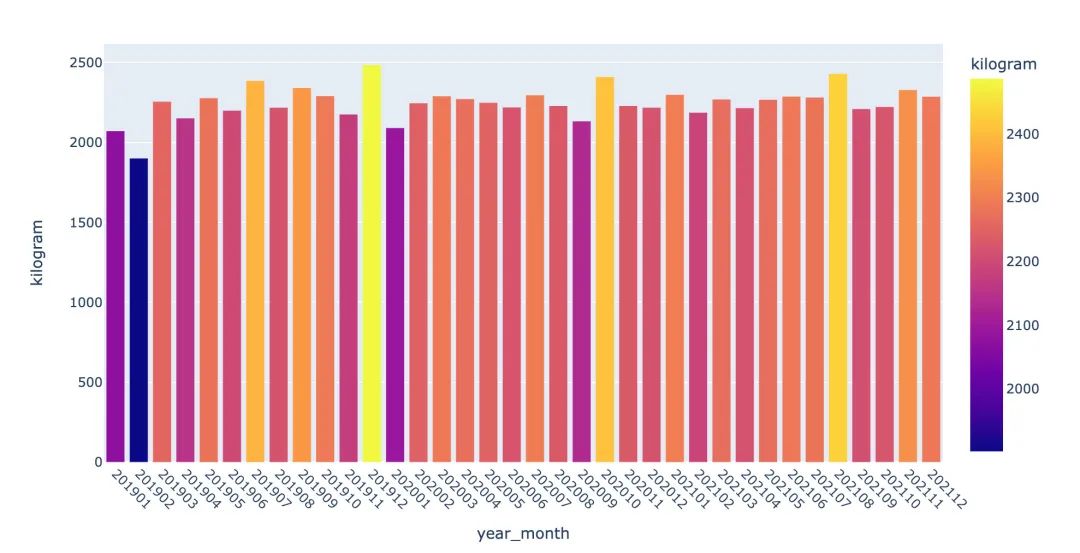
2019-2021 sales trend
df2 = df.groupby(["year_month"])["amount"].sum().reset_index()
df2["amount"] = df2["amount"].apply(lambda x:round(x,2))
fig = go.Figure()
fig.add_trace(go.Scatter( #
x=df2["year_month"],
y=df2["amount"],
mode='lines+markers', # Mode mode selection
name='lines')) # name
fig.update_layout(xaxis_tickangle=45) # Tilt angle
fig.show()

Annual sales, sales and average sales
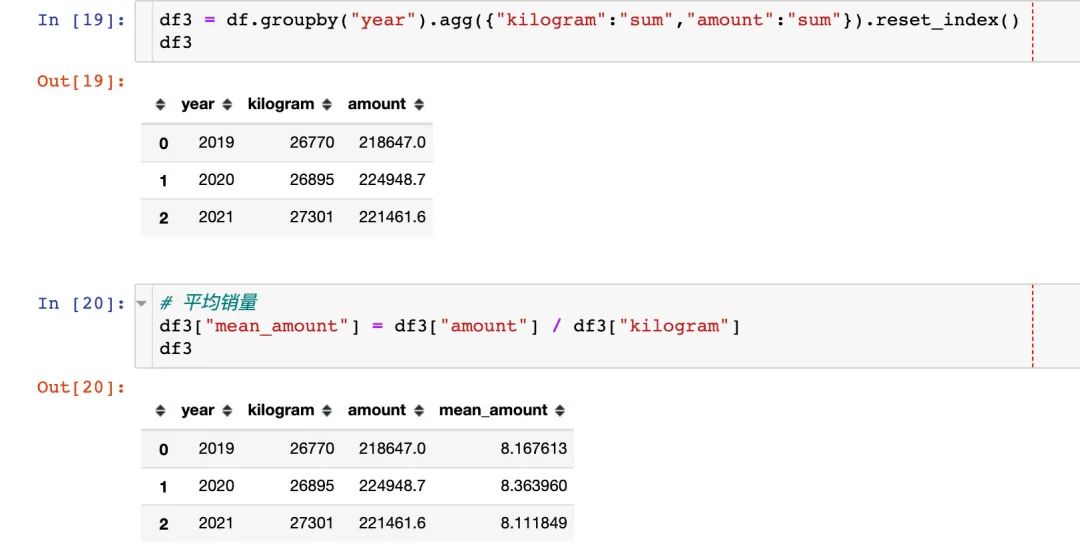
Analysis dimension 2: goods
Proportion of annual fruit sales
df4 = df.groupby(["year","fruit"]).agg({"kilogram":"sum","amount":"sum"}).reset_index()
df4["year"] = df4["year"].astype(str)
df4["amount"] = df4["amount"].apply(lambda x: round(x,2))
from plotly.subplots import make_subplots
import plotly.graph_objects as go
fig = make_subplots(
rows=1,
cols=3,
subplot_titles=["2019 year","2020 year","2021 year"],
specs=[[{"type": "domain"}, # Specify the type by type
{"type": "domain"},
{"type": "domain"}]]
)
years = df4["year"].unique().tolist()
for i, year in enumerate(years):
name = df4[df4["year"] == year].fruit
value = df4[df4["year"] == year].kilogram
fig.add_traces(go.Pie(labels=name,
values=value
),
rows=1,cols=i+1
)
fig.update_traces(
textposition='inside', # 'inside','outside','auto','none'
textinfo='percent+label',
insidetextorientation='radial', # horizontal,radial,tangential
hole=.3,
hoverinfo="label+percent+name"
)
fig.show()

Comparison of annual sales amount of each fruit
years = df4["year"].unique().tolist()
for _, year in enumerate(years):
df5 = df4[df4["year"]==year]
fig = go.Figure(go.Treemap(
labels = df5["fruit"].tolist(),
parents = df5["year"].tolist(),
values = df5["amount"].tolist(),
textinfo = "label+value+percent root"
))
fig.show()
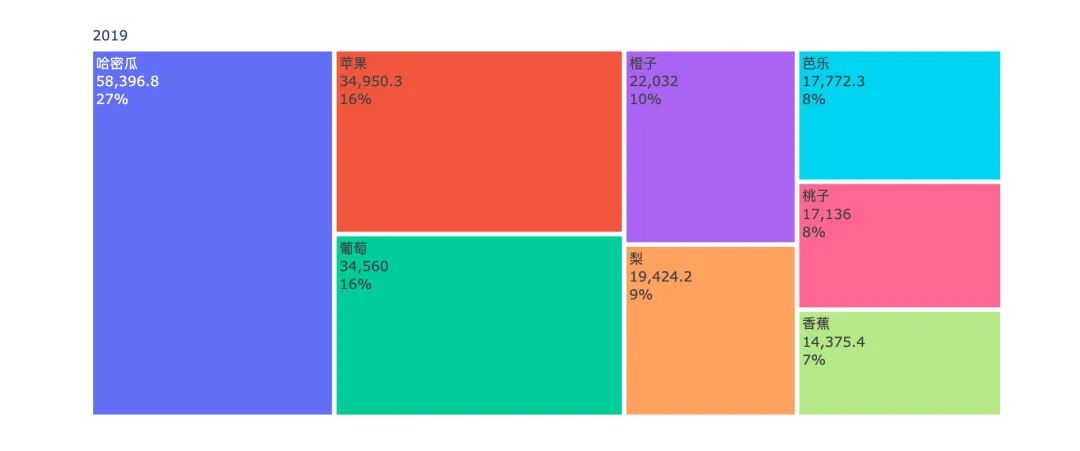
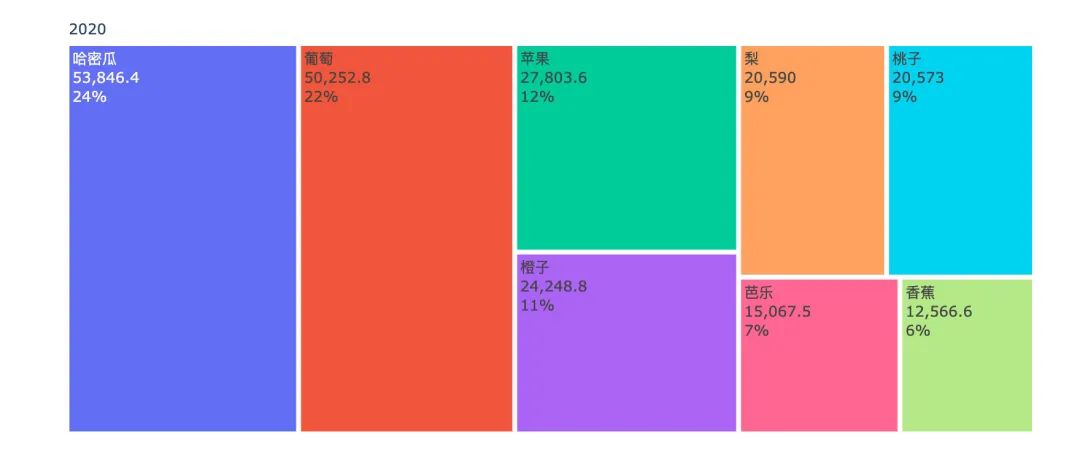

Monthly sales volume change of goods

fig = px.bar(df5,x="year_month",y="amount",color="fruit") fig.update_layout(xaxis_tickangle=45) # Tilt angle fig.show()
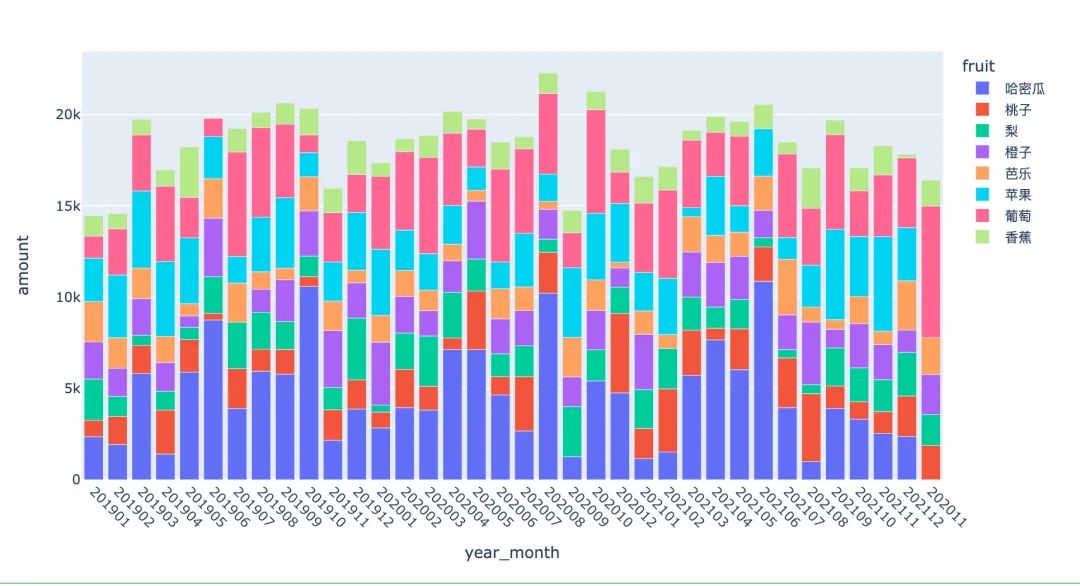
Changes in line chart display:
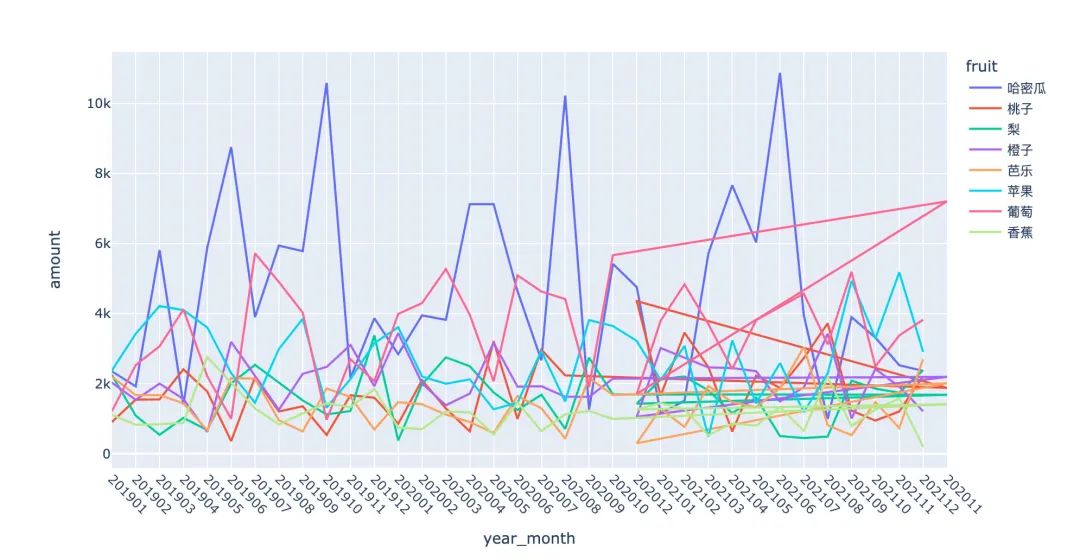
Analysis dimension 3: Region
Sales volume in different regions

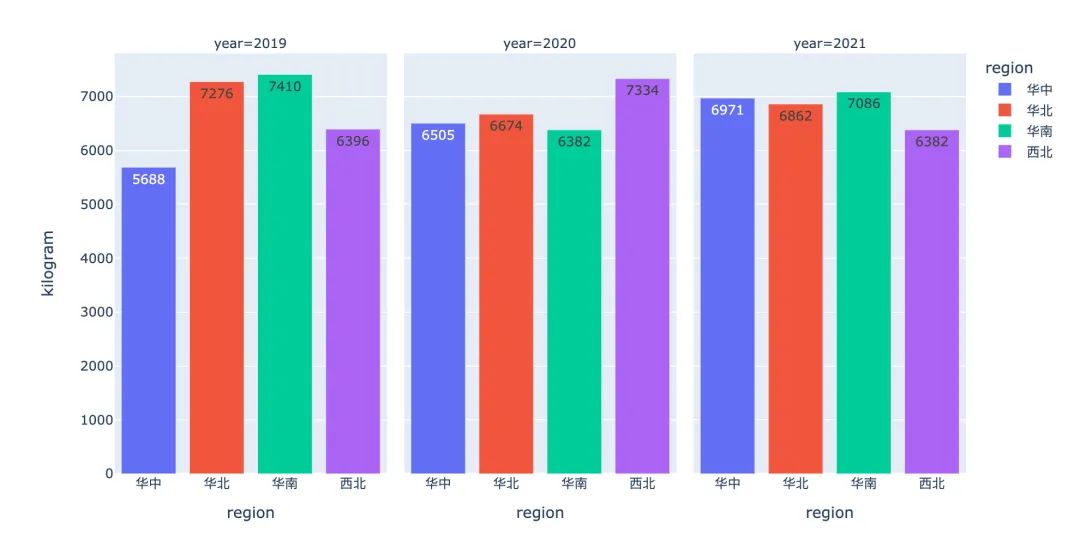
Average annual sales in different regions
df7 = df.groupby(["year","region"])["amount"].mean().reset_index()
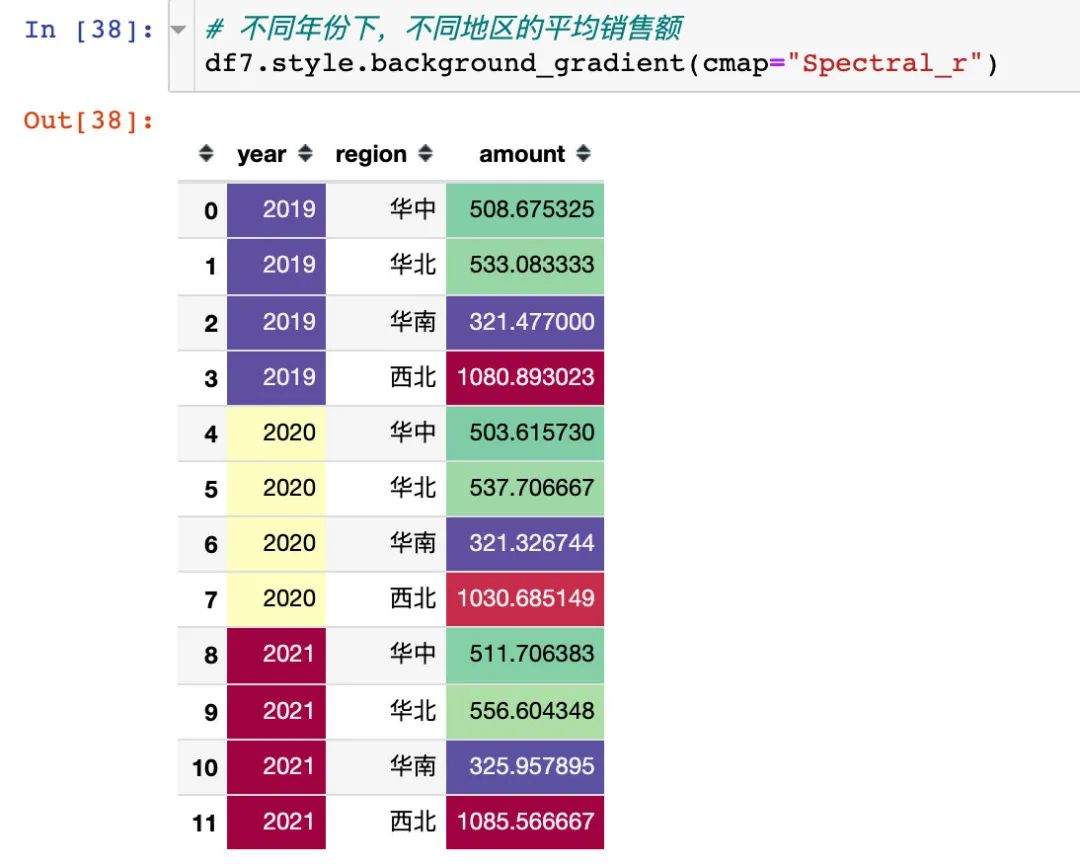
Analysis dimension 4: user
Comparison of user order quantity and amount
df8 = df.groupby(["name"]).agg({"time":"count","amount":"sum"}).reset_index().rename(columns={"time":"order_number"})
df8.style.background_gradient(cmap="Spectral_r")

User's fruit preference
Analyze according to the order quantity and order amount of each fruit by each user:
df9 = df.groupby(["name","fruit"]).agg({"time":"count","amount":"sum"}).reset_index().rename(columns={"time":"number"})
df10 = df9.sort_values(["name","number","amount"],ascending=[True,False,False])
df10.style.bar(subset=["number","amount"],color="#a97fcf")
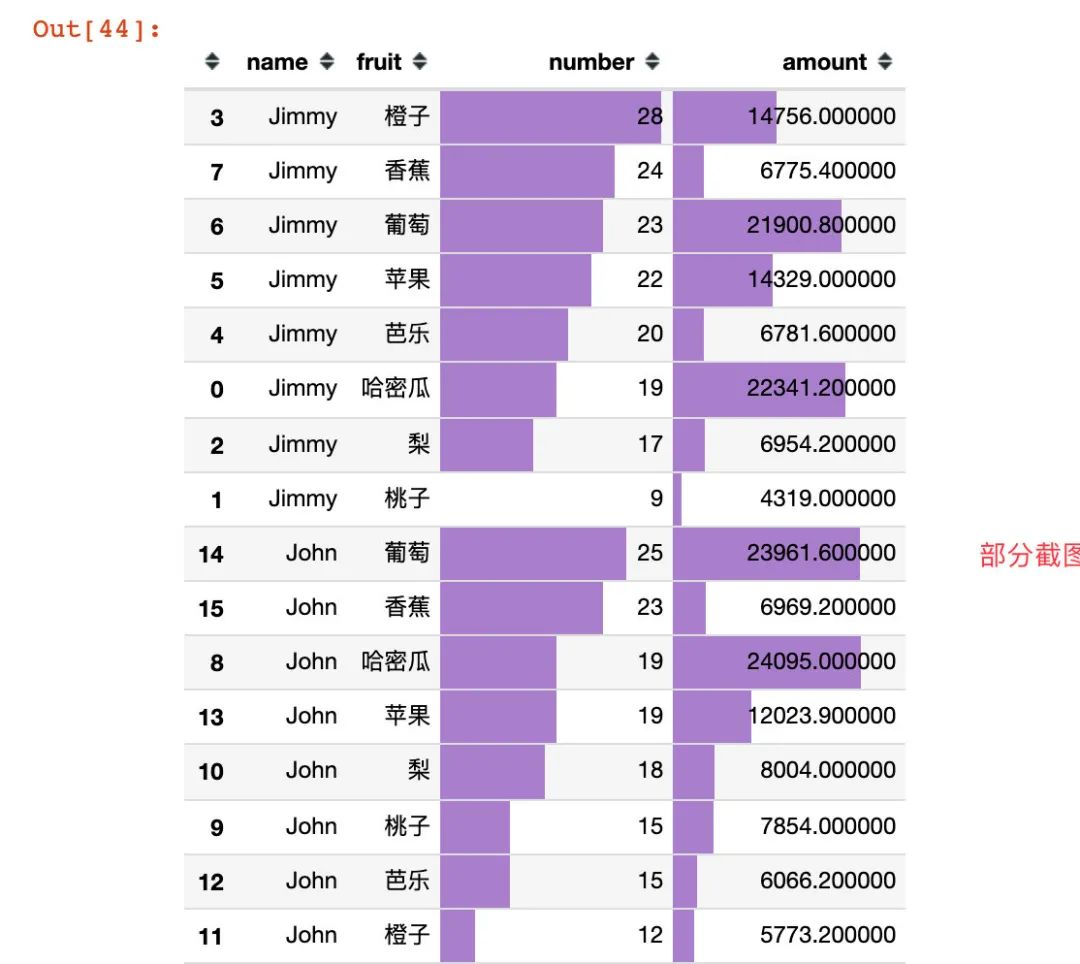
px.bar(df10,
x="fruit",
y="amount",
# color="number",
facet_col="name"
)

User hierarchy - RFM model
RFM model is an important tool and means to measure customer value and profitability.
This model can reflect three indicators of a user's delivery transaction behavior, overall transaction frequency and total transaction amount, and describe the value status of the customer through three indicators; At the same time, according to these three indicators, customers are divided into 8 types of customer value:
-
Recency (R) is the number of days from the latest purchase date of the customer to the present. This indicator is related to the time point of analysis, so it is variable. Theoretically, the more recent the customer's purchase behavior, the more likely it is to repurchase
-
Frequency (F) refers to the number of times a customer makes a purchase – consumers who buy most often have higher loyalty. Increasing the number of customers' purchases means that they can occupy more time share.
-
Monetary value (M) is the total amount spent by the customer on the purchase.
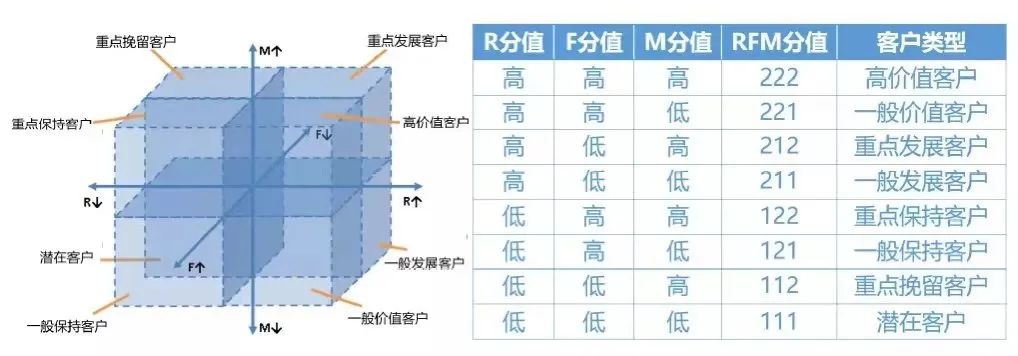
The following is to solve the three indicators respectively through multiple methods of Pandas. The first is F and M: the number of orders and total amount of each customer

How to solve the R index?
1. First solve the difference between each order and the current time

2. According to the difference R of each user, the data in the first place is his latest purchase record: Taking xiaoming user as an example, the last time is December 15, and the difference from the current time is 25 days
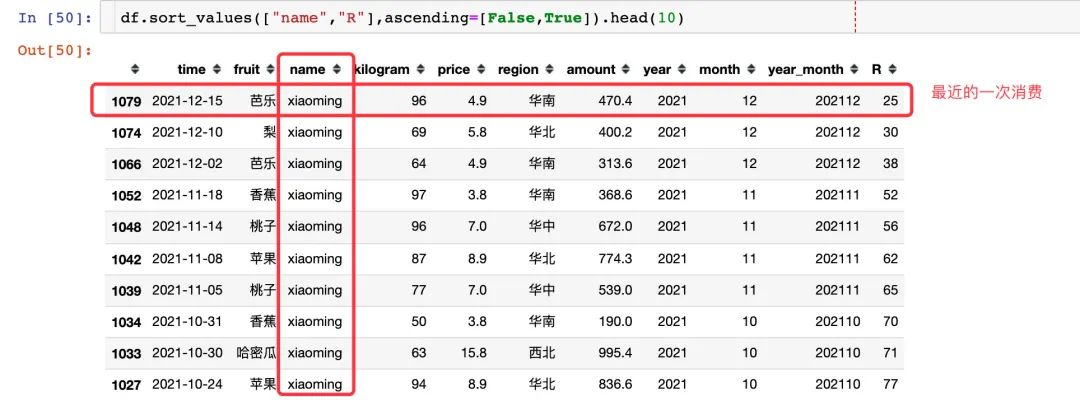
3. According to the user's de duplication, retain the first data, so as to obtain the R index of each user:
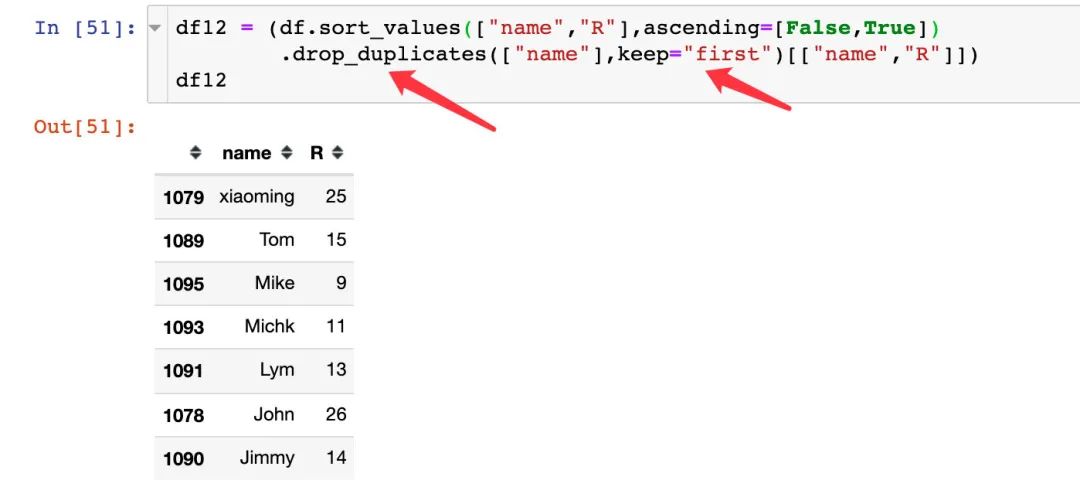
4. Three indicators are obtained by data consolidation:
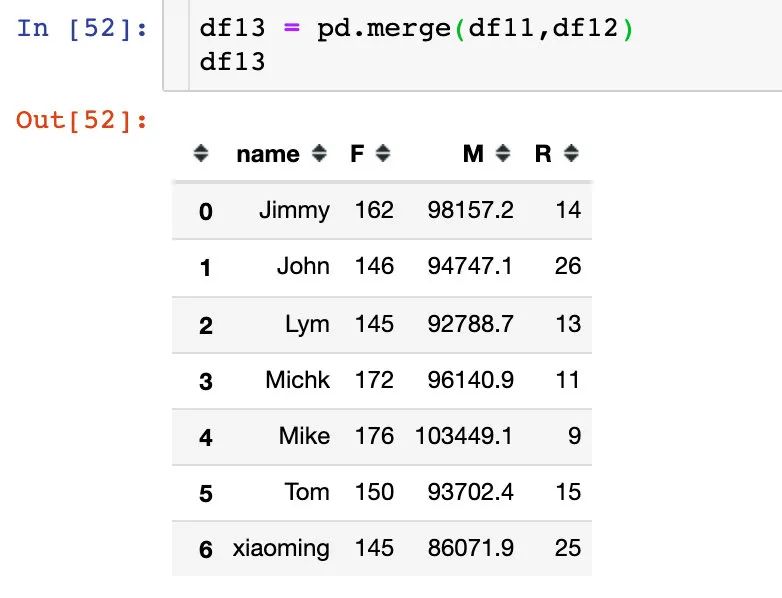
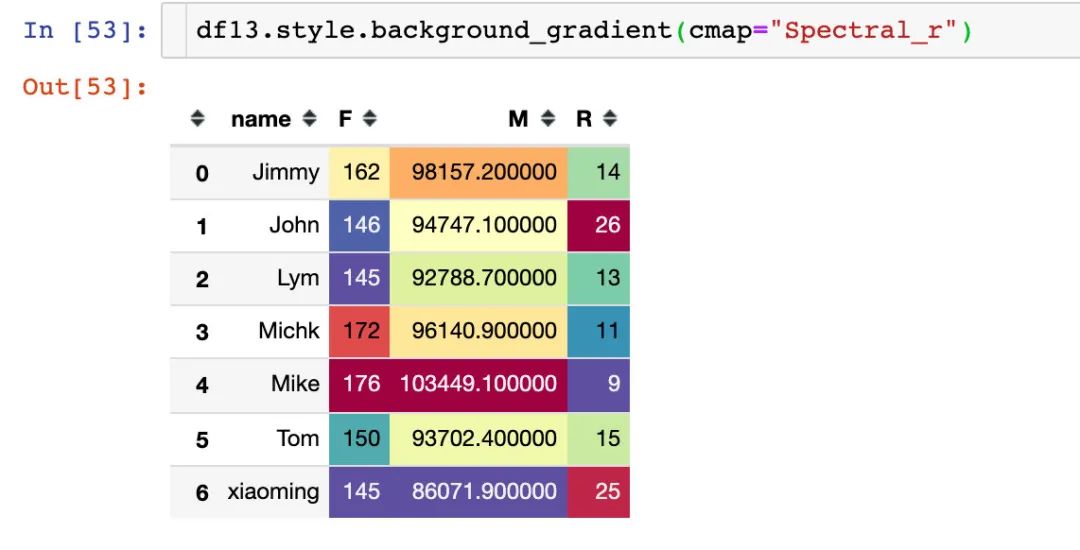
When the amount of data is large enough and there are enough users, users can be divided into 8 types only by RFM model
User repurchase cycle analysis
The re purchase cycle is the time interval between two purchases: Taking xiaoming users as an example, the first two re purchase cycles are 4 days and 22 days respectively

The following is the process of solving the repurchase cycle of each user:
1. The purchase time of each user is in ascending order
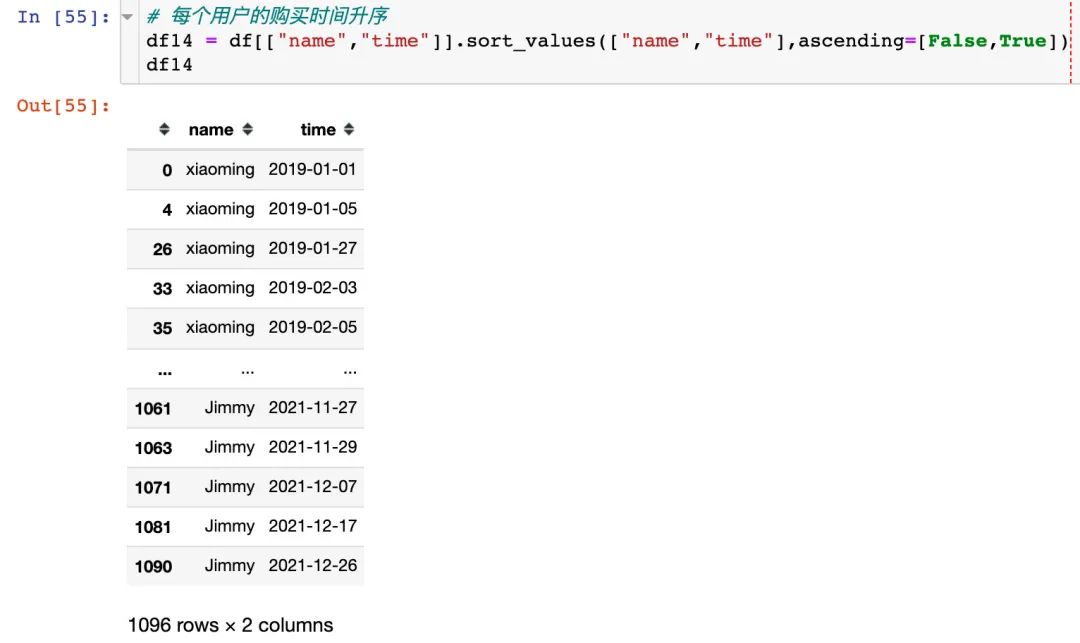
2. Move time one unit:
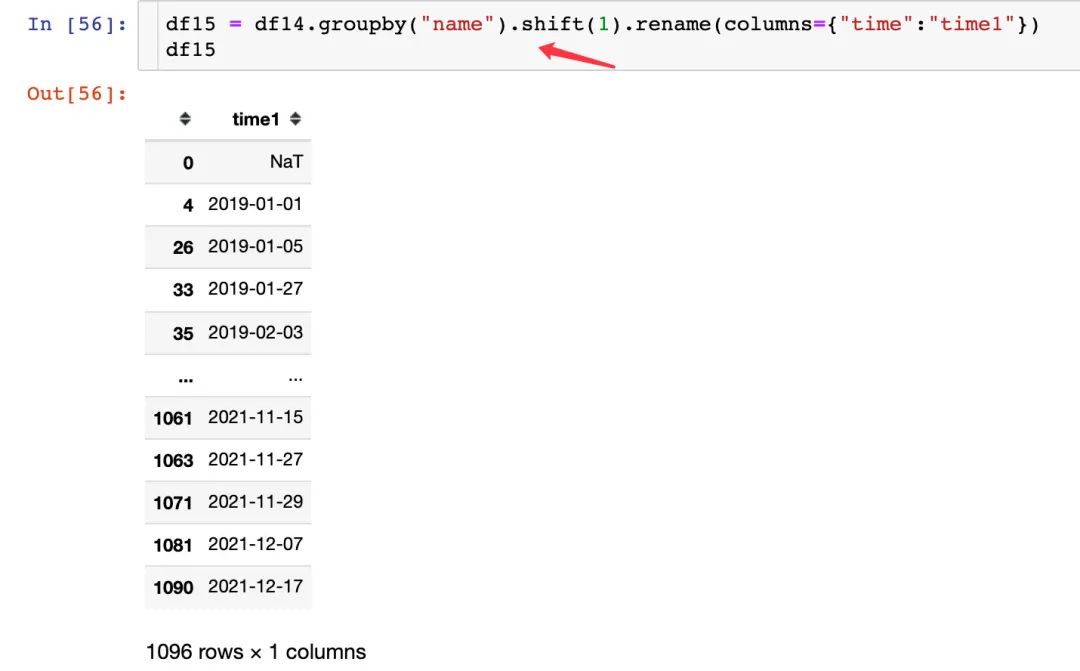
3. Combined difference:
The occurrence of null value is the first record of each user. There is no data before it, and the null value part is directly deleted later

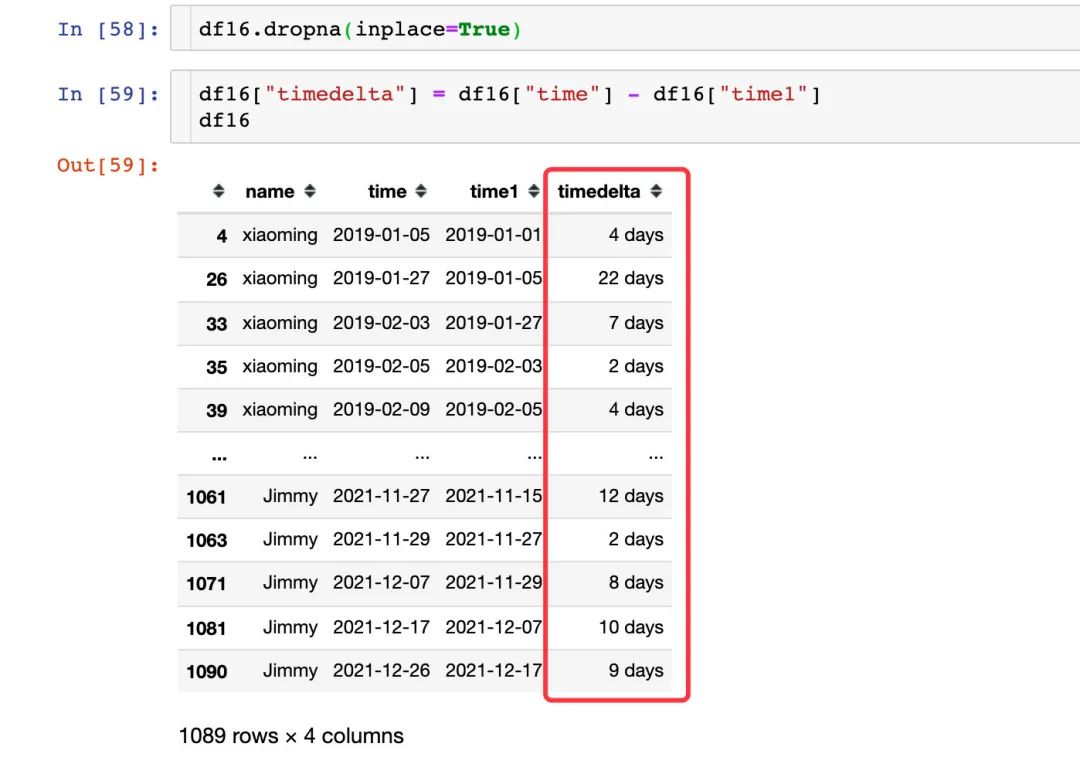
Directly extract the numerical part of the number of days:
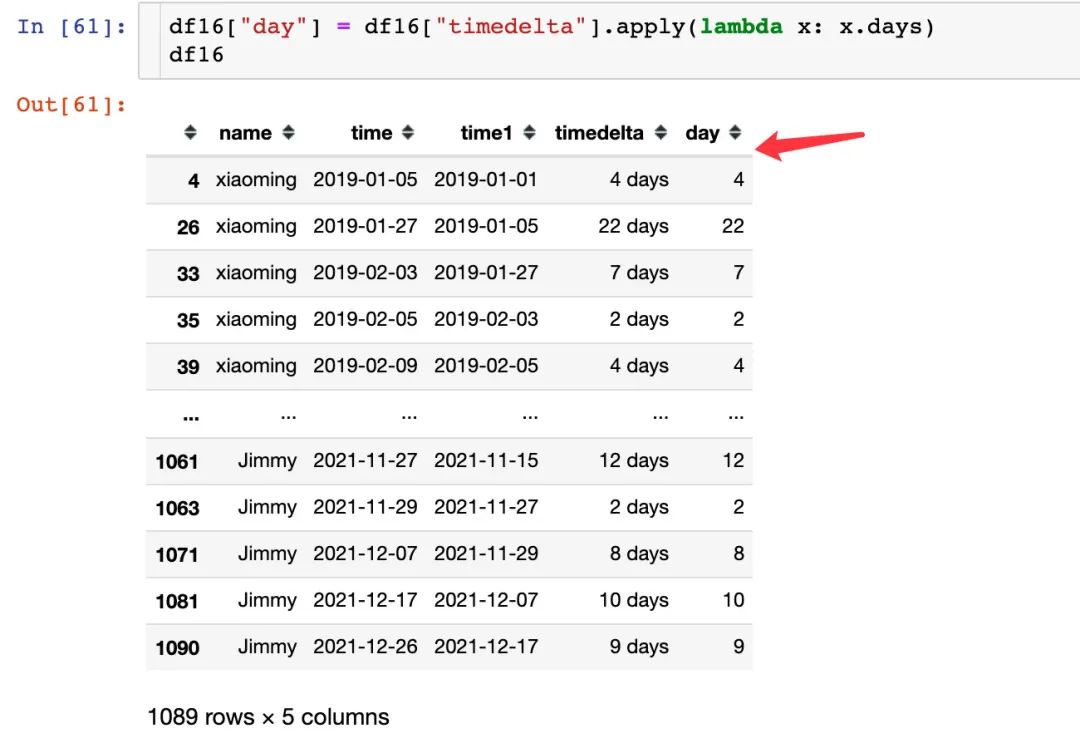
5. Comparison of repurchase cycle
px.bar(df16,
x="day",
y="name",
orientation="h",
color="day",
color_continuous_scale="spectral" # purples
)
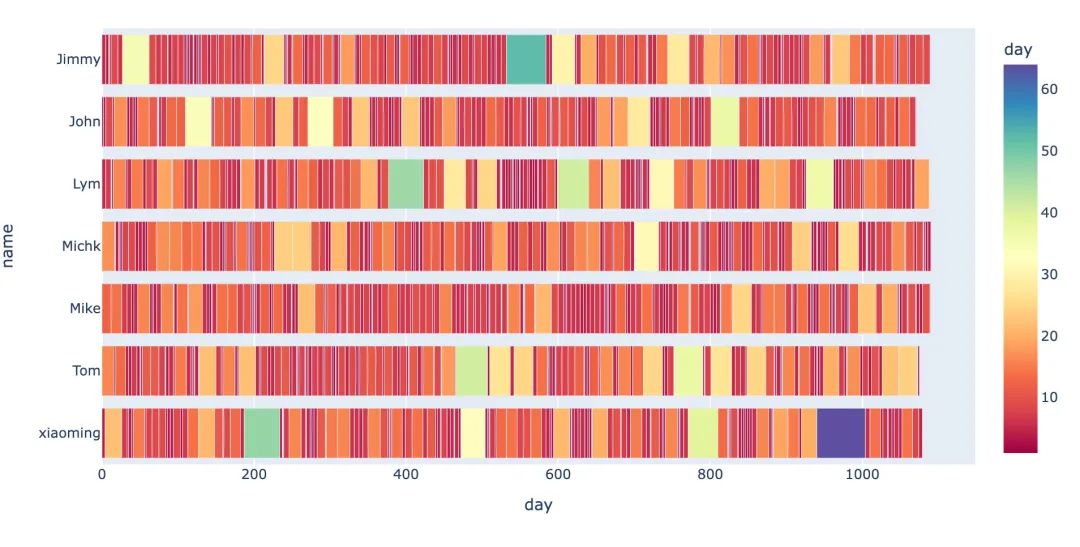
The narrower the rectangle in the figure above, the smaller the interval; The whole re purchase cycle of each user is determined by the length of the whole rectangle. View the sum of the overall re purchase cycle and the average re purchase cycle of each user:
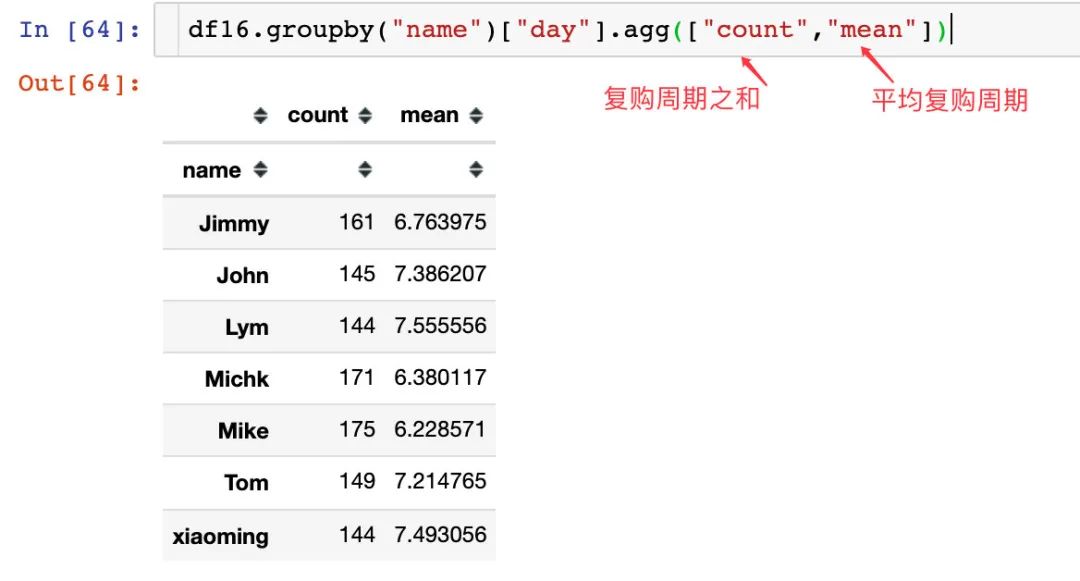
A conclusion is drawn: Michk and Mike are loyal users in the long run, and the overall repurchase cycle is relatively long; Moreover, the average repurchase cycle is relatively low, indicating that the repurchase is active in a short time.
It can also be observed from the violin below that the re purchase cycle distribution of Michk and Mike is the most concentrated.

Technical exchange
Welcome to reprint, collect, gain, praise and support!

At present, a technical exchange group has been opened, with more than 2000 group friends. The best way to add notes is: source + Interest direction, which is convenient to find like-minded friends
- Method ① send the following pictures to wechat, long press to identify, and the background replies: add group;
- Mode ②. Add micro signal: dkl88191, remarks: from CSDN
- WeChat search official account: Python learning and data mining, background reply: add group
